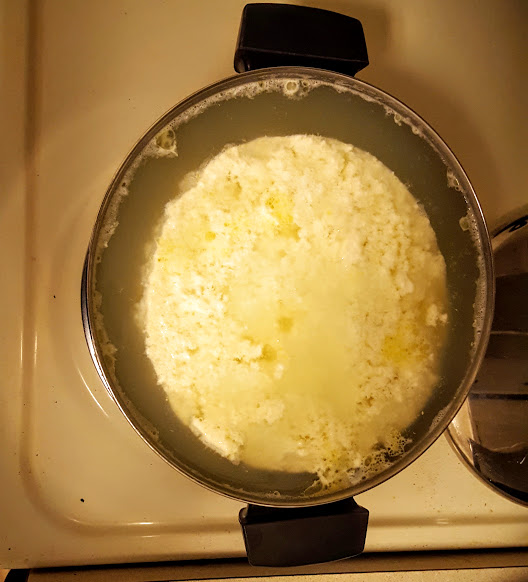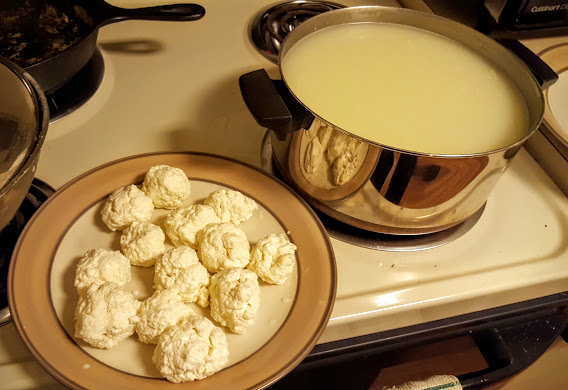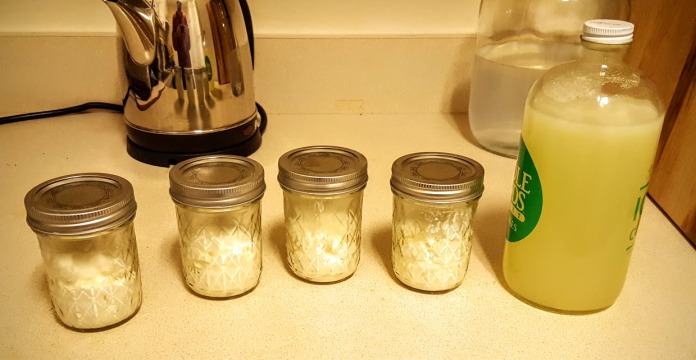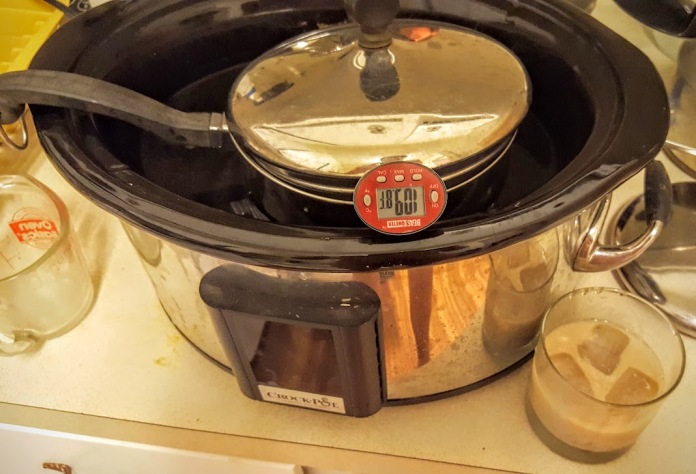Making mozzarella cheese at home is easy but time-consuming. One batch takes about 2 hours and yields 13 oz of cheese per gallon of milk which for me, is 13- 85 calorie servings.
Followup to the bare bones recipe posted yesterday.
Tools Required:
- Pot to hold 1 gallon of high fat milk
- Thermometer (affiliate link)
- Measuring cups and teaspoons
- stirring instrument like a whisk or fork
- plate to hold curds between steps
- Latex or similar gloves to provide a minute heat barrier
- Ladle for dunking curds in the whey (I use a 1 cup measuring cup)
Materials Required:
- Time – 2 hours active, 0 hours passive
- 1 gallon of high fat milk
- 1/8 teaspoon liquid rennet (can use other types, just follow the directions on the box) Affiliate link
- ~2 teaspoons of sea salt
- 1 teaspoon acid to get milk to curdle. Affiliate links: small, economically large (I use it in DIY dishwasher detergent)
Procedure:
- Pour milk into crock pot or regular pot and slowly heat milk to 55 degrees Fahrenheit (13 C)
- While milk is heating, stir the acid into a bit room temp water- just enough to dissolve the acid.
- When the milk is 55 degrees, stir in the acid solution then continue heating.
- While milk and acid is heating, dissolve the rennet in the same manner as the acid
- When the milk reaches 88 degrees Fahrenheit (31 C) then stir in the rennet.
- Do not stir any more after this point!
- Slowly heat to 110 degrees (43 C) then hold the temperature until the curds pull to the middle leaving clear whey around the sides.
- Scoop out and drain the curds while heating the remaining whey to about 175 degrees (80 C).
- Aggregate the curds into a few groups, then dunk and hold in the hot whey kneading between dunks.
- The dunking and kneading is to raise the entire curd to the right temperature which is too hot to handle.
- Don latex gloves for kneading.
- Once the cheese is almost done, add a few teaspoons of salt to the whey.
- Repeat dunking until the cheese is smooth and stretches like taffy.
- It can now be rolled and cut/twisted or balled or however you wish to store it.
- If it starts breaking instead of stretching, just redunk to warm it back up
- Eat, refrigerate for up to 2 weeks or freeze the finished cheese.
Pictures:

Ready for the final dunking. As the curds turn to cheese demonstrated by their smoothness, I consolidate them into the storage size. I also keep a little sample set aside for immediate eating.

Final amount of cheese from 1 gallon of milk. Side note: I adore and fully endorse this scale (affiliate link)
Yes, that’s right…1 gallon of milk only yields 13 oz. of cheese. It takes less time overall but a lot more work than yogurt and the result is a biologically inactive product. Although I love cheese, the roughly 3/4 gallon of whey that remains is my try goal. I mostly use it in to make stock in combination with animal bones, or inoculate it with yogurt whey to replace my $60/month probiotic. Luckily the whey is so useful, the once waste bi-product of cheese making has overtaken industrial production of the valuable cheese itself. I’ll explain more ways to utilize whey tomorrow!
If you possess a greater amount of patience than me, you can keep the curds warm to roll, stretch, twist, cut, etc. your way into beautifully presentable cheese. When I use mozzarella, it is to grate for pizza/pasta type dishes or rip chunks off to stuff under fish or fowl skin before baking. So I don’t put much effort into presentation. It is however rich and delicious but you will likely need to play with the salt levels in the dunking whey to nail your desired levels.












